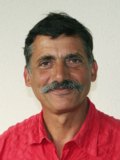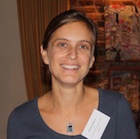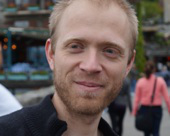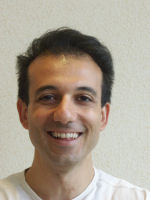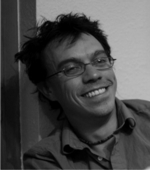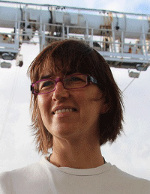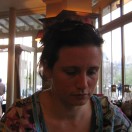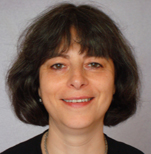SFMC OFFICERS
Bruno Goffé is a CNRS Emeritus Research Director. Researcher at CEREGE, Aix-Marseille University, he was, until 2013, in charge of the issue of geological resources at national level for the CNRS-INSU and co-host of the programming group of fossil and geothermal energies, and critical metals of the alliance for ANCRE energy. He was a Director of Earth Sciences at the national level from 2006 to 2011 as assistant Director of INSU. He is the author of more than 150 publications with peers-reviewed and 17 patent publications. Its main specialties are mineralogy, silicate, carbon, and fluid petrology – geology and geodynamics of mountain ranges and continental areas, – the durability of materials in geological environments, nuclear waste, CO2, drilling insulation cements, high-temperature resistant cements and low-pH cements, – high-pressure and high-temperature experiments.
VICE-PRESIDENT Bertrand DEVOUARD 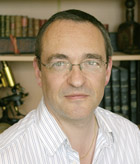
Bertrand Devouard is a professor at the University of Aix-Marseille and a researcher at the CEREGE department. His research uses mineralogy and crystal chemistry methods, including high-resolution microscopy and spectroscopy, applied to materials such as meteorites, gems and synthetic materials. Bertrand has particular interest for mesostructured, aperiodic or poorly crystallized mineral materials, for which he studies the growth-controlling factors and mechanisms.
VICE-PRESIDENT Christian CHOPIN 
CNRS Research Director, in the Laboratoire de Géologie de l’Ecole normale supérieure (Paris). His main interests are metamorphic and experimental petrology, phase relations, fluid-rock interactions, and the characterisation and crystallochemistry of minerals, especially silicates and phosphates. He is in charge of the publication of the SFMC journal: European Journal of Mineralogy.
SECRETAIRE GENERAL Marc BLANCHARD 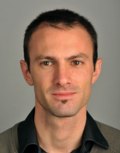
Marc Blanchard is a CNRS director of research working in Toulouse in the “Géosciences Environnement Toulouse » (GET) laboratory. He has interest in processes controlling isotopic fractionation, in the crystal chemistry of mineral phases with environmental importance and in the crystal chemistry of volatiles in the mantle. To this end, Marc mainly uses molecular-scale modelling techniques and spectrosopy.
SECRETAIRE GENERAL ADJOINT Guy LIBOUREL 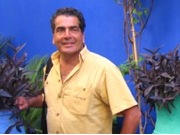
Guy Libourel is a professor at Ecole Supérieure Nationale de Géologie de Nancy (Université de Lorraine) working in the Centre de Recherches Pétrographiques et Géochimiques (CRPG)research department. Guy uses experimental petrology to study the formation of the first solid phases in the Solar system (refractory inclusions and chondrules). He has also interest in anthropic materials (crystals, glasses, slags, ashes) and their long-term reactivity. Guy is a member of the executive board of ELEMENTS.
Stéphanie Rossano is a professor at the University of Paris-Est Marne la Vallée. Her main research theme concerns the study of vitreous material structures and their evolution under the influence of various altering agents (time, water, microorganisms). To access the structural information she seeks, she uses methods of solid spectroscopy (X-ray absorption, Mössbauer, UV-Visible spectroscopy, etc.). She associates it with classical molecular dynamic simulations or ab initio calculations. More punctually, she leads research on complex materials of archaeological (bone, pigments, etc.) and geological interest (minerals containing chromium, etc.).
TRESORIERE ADJOINTE Amélie BORDAGE 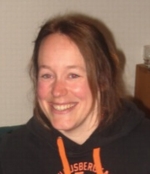
Researcher at Orsay Institut de Chimie Moléculaire et Matériaux (CNRS, Paris-Sud University), Amélie Bordage has a physicist background. She was interested in the impurities present in certain gems and minerals, and in particular the structural and electronic properties related to the presence of impurity. Her research today focuses on functional molecular materials with magnetic properties. The common thread of these themes is the use of synchrotron radiation to characterize the structural, electronic and magnetic properties of the material at a local scale. In particular, she uses the absorption and emission of X-rays, and associates this experimental approach with a theoretical determination of spectra in order to better understand the material.
REDACTRICE DU BULLETIN / CORRESPONDANTE “ELEMENTS” Anne-Marie BOULLIER 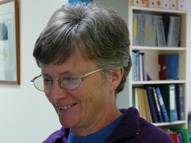
Anne-Marie is a CNRS director of research working in the Laboratoire de Géophysique Interne et Tectonophysique of Grenoble. Her research is based on fluid-rock interactions, and more precisely on mechanisms of deformation and fluid circulation in active fault zones, with implications for the seismic cycle. Her recent work mainly focussed on deformation and hydrothermal alteration of the Nojima fault (Kobe earthquake) and of the Chelungpu fault (Chi-Chi earthquake), through analysis of drill cores.
SFMC COUNCILLORS
Councillors (term 2014-2017)
Damien Daval is a CNRS researcher working at the Laboratoire d’Hydrologie et de Géochimie de Strasbourg (LHyGeS). His work is centred on studying the kinetics of fuild-rock interactions, and more precisely the links between the microstructure of the surface of weathered minerals and their reactivity to aqueous alteration. To do so, Damien combines classical wet chemistry tools with techniques of characterisation of the fluid/soild interface at nano- and micro-scale. His research applies to weathering in surface conditions (e.g. in soils) up to hydrothermal alteration (geothermal sites, CO2 storage).
Simonpietro Di Pierro is Head of Groupe Minéralogie Appliquée, a team of seven engineers and twelve research technicians, within the Département Expertises Matériaux Composites Cristallins de Saint-Gobain Recherche (SGR), in Aubervilliers. Among his main interests, the optical quality of industrial glass and the following fields of application: raw materials capable of being vitrified, refractory ceramic materials, thermomechanical behaviour and relationship between microstructures and properties of glass and vitroceramics, gas and glass relationships at high temperature. Simonpietro Di Pierro holds a Master’s degree in Earth Sciences from the University of Turin in Italy where he studied ophiolites, and a PhD in Applied Mineralogy from the University of Fribourg in Switzerland, where he studied the Neolithic ceramics of the Swiss midlands. Before joining SGR, he was interested in the mineralogy of the mantle, and in particular moissanite (ENS in Lyon).
Lydéric France is a lecturer working in the Univeriosté de Lorraine (Nancy) at the Centre de Recherches Pétrographiques et Géochimiques (CRPG). His research is based on understanding magmatic processes in various geodynamic contexts. Lydéric uses multi-disciplinary approaches (field work, petrology, geochemistry) to better understand how magmatic chambers work and better quantify changes in their physical parameters (pressure, temperature, composition, oxygen fugacity) over time. His current research projects involve mid-ocean ridges and rifting zones such as Afar, the East African ridge and the French Massif Central.
Marguerite Godard is a CNRS director of research working in the Geosciences research department of Montpellier. Her work focusses on identifying and quantifying processes responsible for the migration of melts and hydrothermal fluids, and their implications for the structure anf composition of the oceanic lithosphere – from mid-ocean ridges to subduction zones. Marguerite has a multi-disciplinary approach, combining petro-structural and geochemical studies on natural samples (ocean drillings and ophiolites), experimental petrology and numerical modelling. In this context, Marguerite has been especially involved in trace element analysis of very depleted rocks such as ultramafics, over the bulk rock and in-situ with laser ablation. More recently, she participated in the development of reactive percolation techniques (ICARE laboratory) for in-vitro modelling of hydration and carbonation reactions of ultramafic rocks in hydrothermal systems, with implications for sites of geological storage of CO2. Marguerite has been an editor of CR Geoscience since 2013.
Armand Masion is a CNRS researcher working at the CEREGE research department in Aix-en-Provence. A physical chemistry graduate, he has worked on the nucleation and growth of colloids and on their speciation in environmental systems, in an effort to understand the migration of colloids and their role in the migration of pollutants and nutrients. His current research is focussed on the environmental implications of nanoparticles and nanomaterials. Armand uses spectroscopic tools to identify processes of formation and interaction of particles at molecular scale.
Councillors (term 2012-2015)
Anne-Line Auzende was awarded a Ph.D. by the University of Clermont-Ferrand in 2003. Anne-Line has worked on serpentine minerals in convergent settings, focussing on the microstructure and physical properties of serpentine minerals, with implications for the rheology of subduction zones. Anne-Line then used experimental petrology under extreme conditions during her post-doc at the Institut de Minéralogie, Physique des Matériaux et Cosmochimie(IMPMC, Paris), to better understand the composition and structure of the lower mantle. To do so, her approach focussed on studying the partitioning of elements between high-pressure phases. Anne-Line was appointed as a lecturer at University Paris Diderot, where she combines her research with teaching.
Researcher at the Institut de Recherche pour le Développement (IRD). His research work, conducted at the Institut de Minéralogie et Physique des Milieux condensés (Paris VI University), focus on the use of minerals to trace tropical climate alteration processes and geochemical cycles acting on the Earth’s surface. He uses spectroscopic tools to determine the individual characteristics of mineral categories, linked to the presence of specific defects. In parallel, he uses theoretical numerical tools to interpret spectroscopic measurements and to model the physico-chemical properties of these minerals.
Sylvain Bernard is a CNRS researcher at the LMCM-MNHN. His objective is to deepen the understanding of the geological cycle of organic carbon on the basis of a multidisciplinary approach at the interface between geochemistry, mineralogy and paleontology. During his PhD thesis defended in 2008 at the Laboratoire de Géologie de l’Ecole normale supérieure (Paris), the use of advanced techniques of spectromicroscopy has made it possible to highlight the preservation of signatures of living organisms within rocks that have undergone intense metamorphism. At the same time, he laid the foundations for an experimental approach to the fossilization of organic molecules. In postdoctoral studies at GFZ-Potsdam, he was interested in the processes of degradation of organic molecules linked to the formation of hydrocarbons. Today, his research aims to answer this fundamental question: how do organic molecules and biominerals evolve under complicated geological history?
Mathieu Roskosz is an experimental petrologist specialised in the physical chemistry of geomaterials. His research has implications for magmatic environments and astrophysics. He has particular interest for the kinetics of phase transformations and the evolution of mineral systems from initial disequilibrium to equilibrium. Mathieu has studied nucleation and out-of-equilibrium phase transitions in supercooled silicates, as well as diffusive processes in molten silicates and their redox state. Another application of his work involves isotopic fractionation processes and the kinetics of isotopic equilibration.
Brigitte Zanda is responsible for the meteorite collection of the Muséum National d’Histoire Naturelle in Paris. Her research mainly focuses on the geochemical processes that cause the mineralogy of primitive solar system, based on the study of primitive chondrites and their comparison with astrophysical models. Her recent publications also include contributions concerning the primitive evolution of the planet Mars.
COMMISSAIRES AUX COMPTES
Jannick INGRIN
CNRS Research Director at LMTG in Toulouse (Head of the Mineralogy team). He is a specialist in experimental mineralogy, and is particularly interested in measuring the physico-chemical properties of minerals, atomic diffusion, deformation and reaction kinetics. His recent work deals with the speciation of water in the mantle’s anhydrous minerals.
Michel MADON
Professor, University of Marnes-la-vallée, Director of a component of Marne-la-vallée University: the IFG (Francilian Institute of Geosciences). My interests always converge on the material vibrational spectroscopy of geological interest and the behaviour of materials (in a broad sense) for the storage of waste (nuclear or household).
SECRETARIATS
SECRETAIRE DE LA SOCIETE Rétiba ZERGUINI
